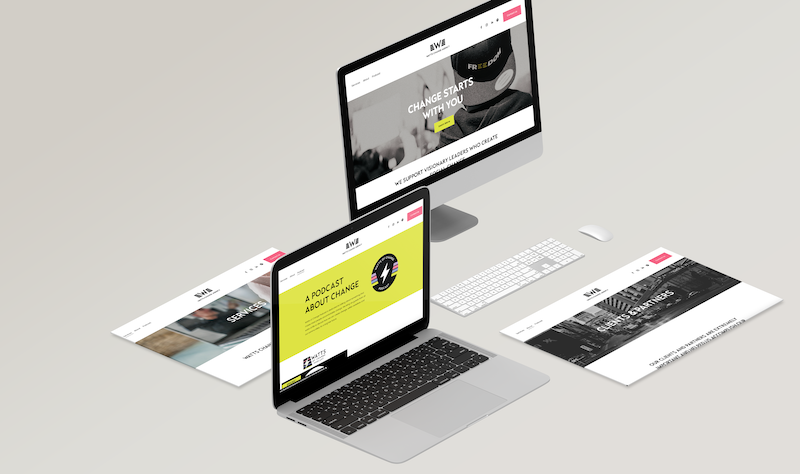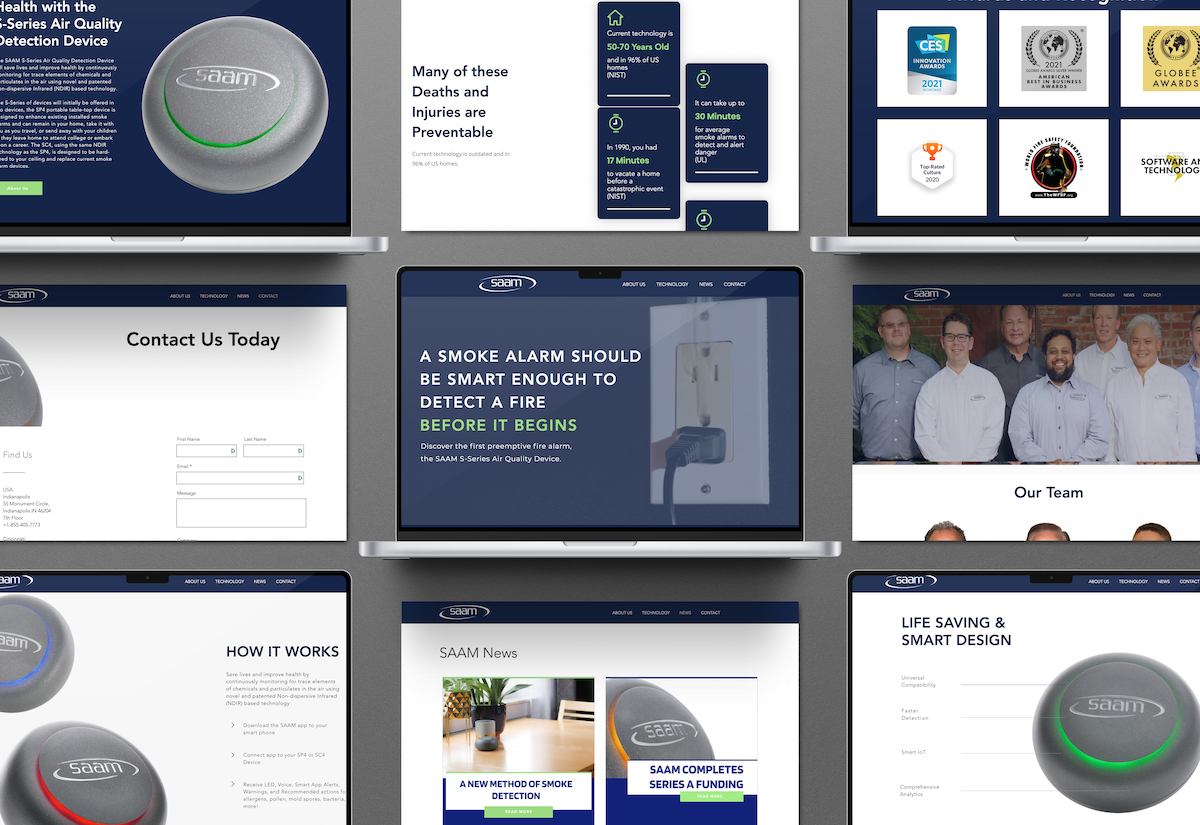5 Research Stats that Prove Web Design is Critical to Brand Perception
Unleashing the Power of Visual Appeal and User Experience to Shape Customer Impressions
In today's digital world, websites have become the ultimate means of communicating your brand's message and solutions to your target audience. Your website is always on and able to represent your business 24/7. This lets you establish connections and showcase your expertise — even when you're not working.
For me, this website (which you are currently on) plays a critical part in my business. My website is the first place I send potential clients to so they can better understand my experience level and see my design style. To me, my website is here to be a resource for potential clients. A lot of my clients might not be ready to buy today, but if I can get them to my website or to engage with my content on social media, then I will be top of mind when they are ready to redesign their logo or build a new website.
Websites are virtual storefronts that never close and provide a constant presence in the online realm. You can think of your website as your very own brand ambassador, working tirelessly to convey your identity and guide visitors through their journey of discovery. With a well-thought-out website, you can captivate your audience, demonstrate how you can address their pain points, and inspire them to take action.
A well-designed website not only attracts visitors but also helps to retain them by providing a seamless user experience. There’s been a lot of research done in website design to understand user behavior, preferences, and the impact of design on the overall user experience. This research has led to the development of best practices and guidelines for website design that businesses can implement to improve their online presence and achieve their marketing and sales goals.
In this blog post, I’ve found 5 research studies that show why website design is critical to a brand’s perception. From optimizing user experience to leveraging psychological elements, these findings offer valuable insights for creating a compelling online presence. By applying these insights, you can ensure that your website effectively communicates your brand and the solutions you offer, making a lasting impact on your ideal audience.
5 research stats THAT PROVE website design is critical to a brand’s perception
1. 46.1% of people say a website's design is the number one criteria for judging the credibility of a company.
A research report by the Stanford Persuasive Technology Lab found that 46.1% of people say a website’s design is the number one criterion for judging the credibility of a company. This study underscores the vital importance of a well-crafted website design in establishing trust and making a positive impression on visitors.
This research shows that businesses must prioritize website design and work to create a positive user experience and foster a sense of trust. By investing in a visually compelling and professional design, companies can position themselves as reputable and reliable. As digital continues to grow, a website's design remains a critical part of building credibility and establishing a strong online presence.
46.1% of people say the number one criterion for judging the credibility of a company is a website’s design.
2. 94% of people say design is THE leading factor for rejecting or distrusting a website
A research study examined the influence of design and information content factors on trust and mistrust of online health sites. The study involved fifteen women who were in the midst of making a challenging health decision. Over the course of four consecutive weeks, the participants were observed while searching the internet for information and advice.
During the study, the participants engaged in both unstructured searches and sessions where they were directed to review specific sites. These chosen sites were carefully selected based on their trust design elements. The participants then gave factors for rejecting or distrusting a website. Of those factors, 94% were design related, and only 6% were content related.
These findings shed light on the complex interplay between design elements and information content in shaping users' trust and mistrust of online health sites. They underscore the importance of an appealing design that inspires confidence and credibility while also delivering accurate and personalized information. The study's insights provide valuable guidance for website designers and developers aiming to create trustworthy and user-friendly online platforms, especially in the realm of health information and decision-making.
According to research, 94% of people say design is the leading factor for rejecting or distrusting a website.
3. Web visitors spend 80% of their time viewing the left side of the page
According to Nielsen Norman Group, web users spend 80% of their time viewing the left half of the page and 20% viewing the right half.
This finding has important implications for website design, particularly when it comes to placing crucial elements on the page. One common observation resulting from this research is that most websites position their logos on the top left side. The rationale behind this decision is rooted in the way we read, from left to right. As a result, our eyes are naturally drawn to the left side of a web page when we first engage with it.
By placing the logo on the top left, website designers take advantage of users' visual scanning patterns. This strategic placement ensures that the logo, which often represents the brand identity, is among the first elements users encounter, helping to establish brand recognition and familiarity.
Understanding and leveraging these user behavior patterns is essential for effective web design. By aligning important elements, such as logos or key messages, to the left side of the page, designers can capitalize on users' natural scanning tendencies and optimize the user experience.
The findings from the Nielsen Norman Group's research provide valuable insights into how users engage with web pages and offer practical guidance for website designers seeking to create intuitive and user-friendly layouts.
According to Nielsen Norman Group, web users spend 80% of their time viewing the left half of the page and 20% viewing the right half. That’s why many brands put their logo on the top left corner of the page.
4. 84.6% of web designers said that crowded web design was the most common mistake made by small businesses
A survey conducted by Good Firms, which involved more than 200 web designers, revealed an overwhelming consensus among the designers. A significant majority, 86.4%, agreed that the most common web design mistake made by small businesses is overcrowded designs.
Overcrowded designs refer to websites that are cluttered with excessive elements, such as text, images, graphics, and multimedia content, often presented in a disorganized manner. When a website is overcrowded, it becomes difficult for users to focus on the most important elements, leading to a lack of clarity and potentially obscuring key messaging or calls to action.
Small businesses may fall into the trap of overcrowded designs for many reasons. Limited resources, time constraints, and a desire to showcase as much information as possible all contribute to this common mistake. But it’s essential to recognize that simplicity, clean layouts, and strategic use of white space are key principles of effective web design.
By adopting a minimalist approach and prioritizing the most relevant and impactful content, small businesses can create websites that offer a better user experience. Streamlined designs enable visitors to quickly find the information they need, navigate seamlessly, and focus on the core value propositions of the business.
Instead of overcrowding your website with paragraphs of text, break down information into statistics. This makes your website easier to digest and well-designed.
5. Visual appeal most influences first impressions
In a comprehensive study focusing on user performance and satisfaction with websites, researchers investigated the impact of visual appeal and usability on user experiences. The study involved participants who completed different tasks on websites that varied in visual appeal (high and low) and usability (high and low).
The study revealed one crucial insight: first impressions of a website are most significantly influenced by its visual appeal. When users initially encounter a website, the visual elements play a pivotal role in shaping their perceptions and forming judgments about the brand or organization behind it.
A visually appealing website can capture users' attention, spark interest, and create a positive emotional response. It sets the stage for a positive user experience and encourages further engagement with the website's content and functionality.
While usability remains a critical factor in the overall user experience, the study highlights the power of visual appeal in capturing users' attention and establishing a favorable initial impression. However, it is important to note that visual appeal alone is not sufficient for long-term engagement and satisfaction. Usability factors, such as intuitive navigation, clear information hierarchy, and efficient functionality, play a crucial role in maintaining user engagement and achieving user goals.
Research shows that first impressions are most influenced by the visual appeal of a website. Is your website designed to catch the eye of your target buyer?
In the world of business and branding, it’s essential to ensure your website stands out from the crowd and creates a memorable first impression. Failing to do so could result in potential customers quickly leaving your site and choosing a competitor, making it vital to invest in a well-designed website that reflects the essence of your brand and captures the attention of your audience.
Trust me, I owe a LOT of money to my website. It’s the best thing that I have invested, and I will continue to improve my website to better reach my target audience. I hope you do the same.
Are you planning a website design project? I know it can be overwhelming and you don’t always know where to start. To help you out, here is a free website planning guide that will step you through the whole process. You can download it by clicking the button below and filling out the form.
Need some professional help with your next website redesign? Connect with us below to get started on your website redesign project.






